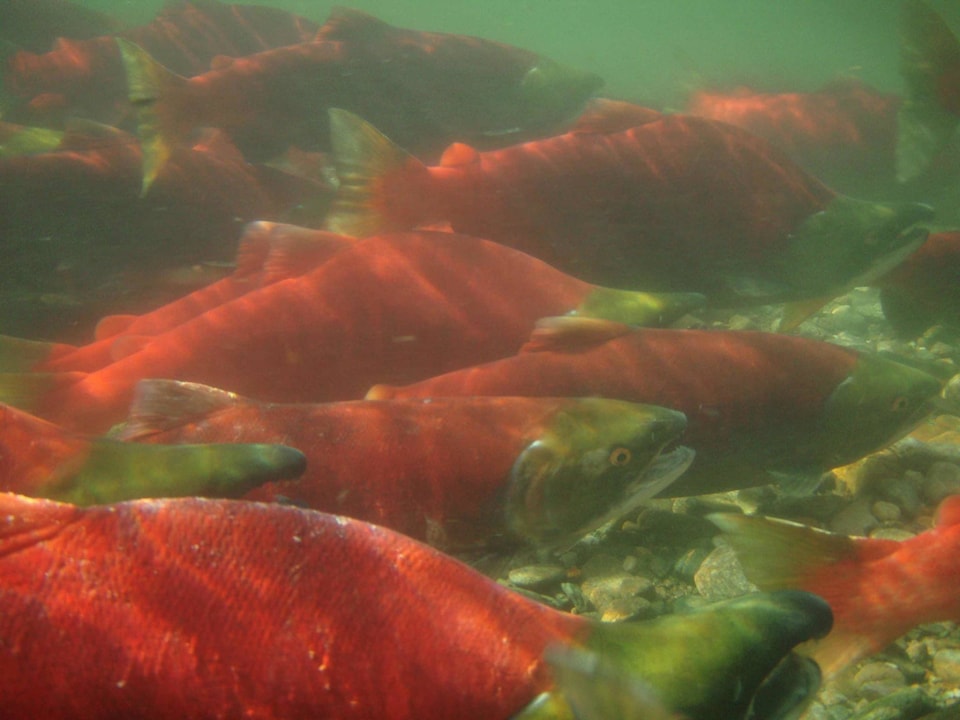Last week we reported on the sockeye closure and the affect it would have on businesses, this week we hear from Kispiox Band, the Department of Fisheries and Oceans (DFO), and the Gitksan Watershed Authority.
Read more in the July 5 edition of The Interior News.
First Nations
The closure of sockeye salmon fishing is not fair to First Nations people, that’s the message from Kispiox Band manager, Keith Morgan.
“I think it’s pretty much against the First Nations rights and entitlements,” Morgan stated.
While the closure is meant to increase the number of fish on the river, Morgan doesn’t agree with the closure for First Nations communities.
Not only does Morgan believe it’s against their rights, but it’s their main fish to survive.
“Usually we’re already fishing, once the river goes down they start fishing for sockeye right away to fill our smoke houses up, and some people jar them to prepare for the winter,” he said.
Morgan blames the DFO for the mismanagement of sockeye that led to the closure.
“They should have put more policies prior to shutting it down.”
Department of Fisheries and Oceans
DFO’s north coast area director Colin Masson said although the number of sockeye salmon this year is very low, it’s not the lowest.
Masson said the department has been in contact with First Nations since last year to find a solution for the closure that was expected.
“First Nations have agreed that there would be no targeted sockeye fishing in the Skeena or approach areas as a result of the anticipated poor return. DFO’s been working with the First Nations since early last fall to look at how to address that anticipated situation and First Nations had a technical process where they then looked to try to identify alternatives to sockeye harvesting … [They] have agreed [to] not target on sockeye whatsoever and to redirect their efforts as to some measure on the chinook stocks and a little bit toward coho later in the year,” said Masson.
The closure of the sockeye season will be in place until next season unless there’s information from the test fisheries and are able to confirm the in-season estimates to be over 600,000. Masson said if that happens, then the First Nations people would be allowed the fish for sockeye again.
“In which case we would work to reopen the First Nations food, social, ceremonial harvesting,” he said.
But if the return shows a number over one million sockeye salmon, then the DFO would look at opening more fishery opportunities.
“Perhaps recreational retention and so forth … It would be at least until mid July before we’re able to get those estimates in season,” he said.
Managing the sockeye numbers is an interesting challenge, Masson stated. But, he said since the exploitation rate for the sockeye stock was reduced, they saw better returns.
“Of course the commercial interest argued that it wasn’t necessary to make a drastic reduction and some others argued that, well, to look after some of the individual sockeye stocks, we needed to make at least that level of reduction and so this reduced exploitation from 60 to 40 per cent has shown improved returns in a number of the components of the Skeena sockeye mix,” he said.
While people are not pleased with the decision to close the sockeye season and implement a partial closure of salmon fishing on the Skeena River, the DFO said there are many factors that led to the closures, but gill-net fishing is not one of the main reasons.
“The gill-net fisheries are controlled by timings of openings, so that they are not open when we know particular stocks of concern are moving through the gill-net fishing areas, and they’re also controlled by mesh size and other technical measures like weed lines so the nets are dropped below the surface to minimize some steelhead interception or coho interception — so they’re not entirely indiscriminate,” he said.
Gitksan Watershed Authority
Gitksan Watershed Authority coordinator Charlie Muldon released a statement indicating he was pleased with the closure of recreational fishing. The statement reads in part:
“With First Nations starting the season closed for sockeye and placing an increased demand on Chinook, Coho and Steelhead, GWA is pleased to see that DFO has decided to close the salmon recreational fishery on the Skeena entirely until at least July 15th. These restrictions are necessary to enhance our opportunity to meet our food fish needs this season. In response to demands by Skeena First Nations, DFO has initiated this closure in accordance with our Constitutional priority for food fish and has taken these preliminary steps to repair past histories of mismanagement. Recreational, commercial and First Nations food, social and ceremonial (FSC) harvesting of sockeye salmon will remain closed unless an in-season indication of increased Skeena sockeye is discovered.”
Muldon adds he believes the DFO may need to take more steps to protect the fish:
“I feel DFO has taken some initial steps to facilitate First Nations priority rights under the Constitution of Canada. However, further steps may need to be taken to ensure that our rights are protected and food fish needs are realized. As in 2013, this is a very difficult time for the Gitksan but the majority of us are thinking about the future and do support the necessary conservation measures.”
Related stories
